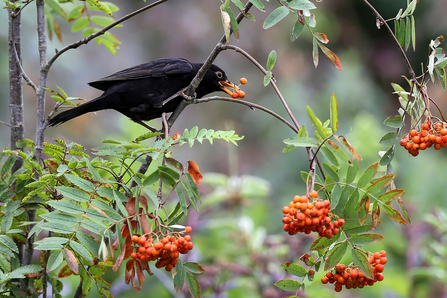
(C) Margaret Holland
Protect wildlife for generations to come
A beautiful brown and cream combination, adult speckled woods feed on honeydew, while the caterpillars feed on a variety of grasses, including false broom and cock's-foot.

(C) Margaret Holland
The hot, dry weather this summer has seen many fruits ripening early, and in the past month the hedgerows at our reserves have exploded with blackberries, rowan berries, rose-hips, elderberries and sloes. These fruits are devoured by birds, mammals and insects, which is why it's so beneficial when farmers are able to leave hedgerows to grow.
Fancy a spot of foraging? Bring your basket along to the Sutton Courtenay Environmental Education Centre on Friday 5 September for Nature, Natter and Nibbles, or weave your own willow harvest basket at Windsor Great Park on Sunday 14 September!
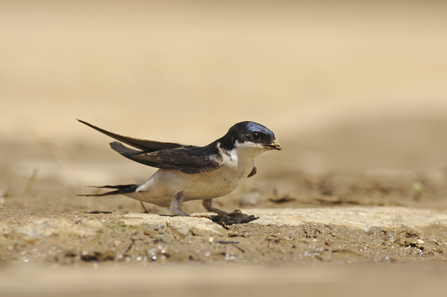
©Dawn Monrose
House martins are incredible birds: measuring just 12cm long, they fly as much as 6,000 miles every year. Despite their strengths, they are a threatened species on the UK birds of conservation concern red list. At this time of year, many are still raising their broods in the eaves of houses and barns, but their epic migration south can happen any time between now and the end of October.
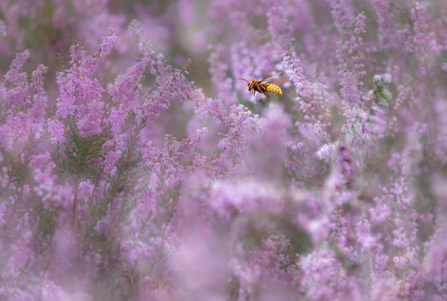
© Jon Hawkins - Surrey Hills Photography
With their golden and crimson livery, hornets are beautiful insects. They also have painful stings and can defend themselves if threatened but, like most animals, they are more wary of humans than we are of them. September is often the best time of year to see them when colonies are at their peak - look out in woodlands as workers scavenge near their nests in hollow trees.
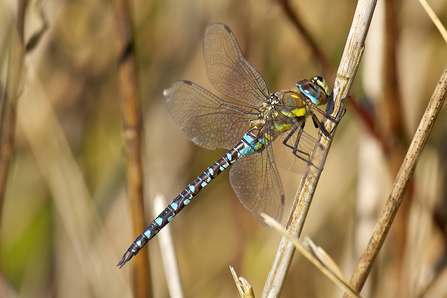
©David Martin
Migrant hawkers are one of the later dragonflies to emerge as adults in the summer, and you may see them still flying as late as November. They breed in pools of standing water but look for the adults flying in gardens, woodland and along hedgerows too. Thatcham Reedbeds is a fantastic nature reserve to spot them, with over 14 species of dragonfly and damselfly seen here.
As a group, hawkers are the largest and fastest flying dragonflies; they catch their insect-prey mid-air and can hover or fly backwards.
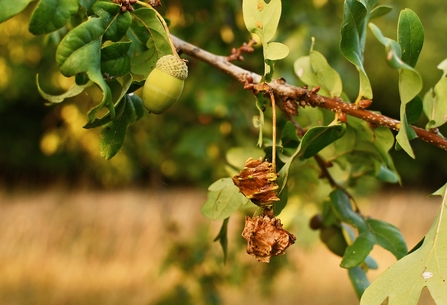
When a tiny wasp called Andricus quercuscalicis lays her eggs in young acorns, it creates a large, knobbly growth that bursts out of the nut, which becomes a nursery for the tiny larvae inside!
An iconic seed to look out for this month is the acorn. This famous nut of the oak tree is devoured by a huge range of birds, mice, badgers, squirrels and insects - not to mention humans: some people even make acorn coffee.
However, one of the weirdest things that happens to acorns is knopper galls: when a tiny wasp called Andricus quercuscalicis lays her eggs in young acorns, it creates a large, knobbly growth that bursts out of the nut, which becomes a nursery for the tiny larvae inside!
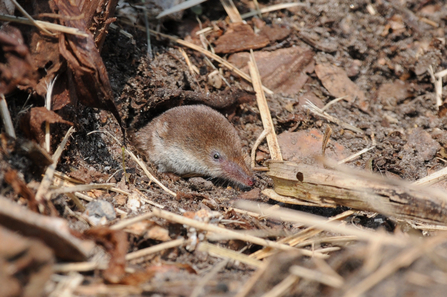
Common shrew. Picture: Carl Wright
From May to September, female common shrews have as many as four litters of up to seven young, so by this time of year the population is at its absolute peak. You can sometimes see mother shrews and their young in 'caravans', where each one holds onto the tail of the one in front!
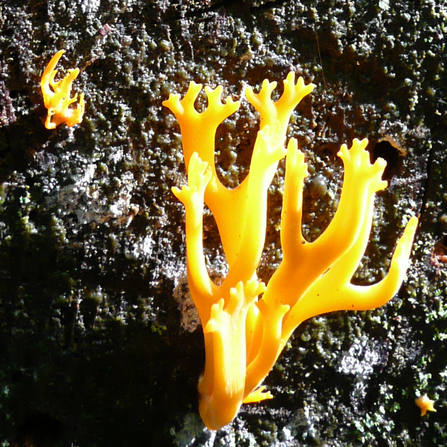
Yellow staghorn fungus. Picture: Karen Lloyd
As it gets colder and wetter, this is a great time of year to look out for a host of mushrooms and toadstools, but one of the most striking is the bright yellow staghorn (Calocera viscosa). This small but pretty fungus sprouts from dead and rotting wood. Our Snelsmore Common Country Park nature reserve is a great place to look for this and lots of other autumn-fruiting fungi. If you find any good ones, let us know on social media!
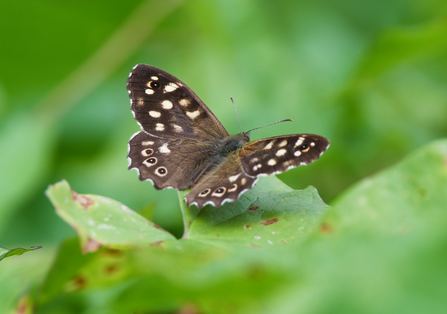
A beautiful brown and cream combination, adult speckled woods feed on honeydew, while the caterpillars feed on a variety of grasses, including false broom and cock's-foot.
As summer wanes, the white butterflies are at their most numerous, constant companions flitting at the peripheries. However, you may also spot the speckled wood flying in the dappled light of woodland edges and rides, or even among the long grasses of gardens. A beautiful brown and cream combination, bordered by eyespots, adults feed on honeydew, while the caterpillars feed on a variety of grasses, including false broom and cock's-foot.
With two to three broods across the year, they welcomed us into spring and will accompany us as summer fades into autumn.
A larger creature of long grasses is the magnificent kestrel, which hunts the small mammals hiding among the strands. If you spot a bird hovering above a field, it’s a good chance you’re watching a kestrel. This familiar behaviour gives it one of its old country names: the 'windhover'. The kestrel has the incredible ability to keep its head still while it hovers - even in strong winds - helping it to pinpoint its prey by sight.
Spend some time in Bernwood Meadows east of Oxford, or in Little Linford Wood on the outskirts of Milton Keynes, and keep your eyes on the skies for a possible sighting!
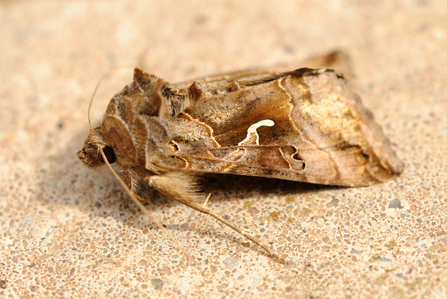
©Amy Lewis
With the silver ‘y’ markings on its wings which inspire its name, and intricate patterns in dark grey, silver and brown, the silver Y moth is somewhat reminiscent of an ornate violin. It’s a migrant from Europe and North Africa, and a common sight in late summer before making its way back to the continent to escape our cold winters.
Some moths fly during the day, while others explore the night; the silver-y moth can be seen during both – you might spot it in flowery grasslands, or it may pay you an evening visit if you’ve left a window open!
Learn to identify our common moths